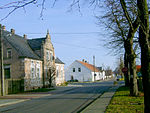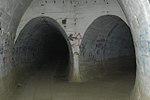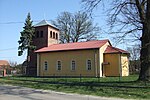Nowy Dworek, Lubusz Voivodeship
Villages in Świebodzin CountyŚwiebodzin County geography stubs
Nowy Dworek [ˈnɔvɨ ˈdvɔrɛk] is a village in the administrative district of Gmina Świebodzin, within Świebodzin County, Lubusz Voivodeship, in western Poland. It lies approximately 10 kilometres (6 mi) north of Świebodzin, 44 km (27 mi) north of Zielona Góra, and 48 km (30 mi) south of Gorzów Wielkopolski.
Excerpt from the Wikipedia article Nowy Dworek, Lubusz Voivodeship (License: CC BY-SA 3.0, Authors).Nowy Dworek, Lubusz Voivodeship
gmina Świebodzin
Geographical coordinates (GPS) Address Nearby Places Show on map
Geographical coordinates (GPS)
| Latitude | Longitude |
|---|---|
| N 52.333333333333 ° | E 15.516666666667 ° |
Address
1A
66-203 gmina Świebodzin
Lubusz Voivodeship, Poland
Open on Google Maps






